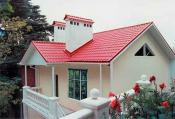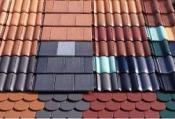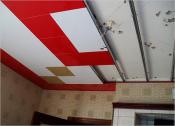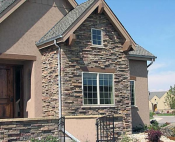Search
Login
Recommended
How to make an ideal floor foundation with your own hands
If you have a creaking parquet board, linoleum bubbling, cracked floor tiles - this is a sign of poor preparation of the base of the floor. Self-leveling mixes or bulk floors will help you solve this problem.
Content
- General information
- Rough alignment video
- Fine alignment video
- The advantage of the bulk floor
- Composition of bulk floors
- Binders - cement, gypsum, mixture
- Mixtures for bulk floors
- Floors for rooms with special conditions of use
- Specialist advice
General information
For getting quality flooring, quality foundation preparation is needed. The base must be firm, even, dry and smooth.
Using self-leveling mixtures, you can easily achieve your desired goal.
But do not think that any leveling mixture will do everything by itself.
Guaranteed success depends on the skill of the stacker, on the initial state of the foundation, on the correct choice of the composition itself.
Currently, there are two types of leveling mixtures - equalizers for screed (rough leveling) and bulk floor (thin leveling).
Rough alignment
Leveling agents for screeds or bulk screeds are used to eliminate significant defects in floor surfaces, as a result of which a main supporting layer is formed.
In addition, bulk screeds are used to repair the base or as a final screed when installing underfloor heating.
In other words, these mixtures cannot be called self-leveling, since after mixing (dilution) with water, the mass has a rather thick consistency.
By applying a mixture such as ordinary cement-sand, along beacons (from 10 to 300 mm., But not more than 10 mm. In one pass), then level with a rule and a metal spatula.
But working with this mixture is much easier, since bulk screeds contain additives to increase the plasticity of the working solution and the strength of the base.
Such screeds are more mobile, can be laid with a thinner layer, as a result, more economical.
A reliable firm equalizer is guaranteed to protect the coating from cracks.
Fine alignment
Self-leveling mixtures or self-leveling, or self-leveling floors - all this is the name of the finish base before the decorative finish.
With the help of such mixtures, minor flaws and height differences - from 3 mm are eliminated. up to 20 mm. Of course, these mixtures can also be used to eliminate big problems.
But, in this case, laying in several layers will be required. After mixing the mixture with water, a liquid substance is formed, it spreads along the base and levels the horizontal surface under the action of gravity, without the participation of beacons and level.
If necessary, to accelerate the spreading and leveling of the mixture, when applying it, use a steel spatula or squeegee (depending on the thickness of the layer).
To eliminate air bubbles using a needle roller. Bubbles must be eliminated, otherwise after drying, lunar craters may form.
After pouring and setting, the working surface becomes perfectly flat.
In the production of bulk floors, you need to know that it is impossible to arrange drafts and turn on fan heaters, since the bulk floor, like plaster, does not dry out but sets.
Water should not evaporate too quickly, otherwise the base may crack or peel.
The advantage of the bulk floor
Easy to apply.
For work, special tools are not needed, the execution speed is 2-3 times higher than when working with traditional sand-cement mix.
The bulk floor is suitable for all types of household floor coverings:
linoleum, carpet, laminate, parquet, ceramic tiles.
Grasps quickly.
The bulk base with polymer additives sets very quickly, you can walk on it in a few hours, and the next day you can mount the flooring.
It forms a perfectly flat surface.
The mixture of the bulk floor contains fine-graded fillers, therefore, after setting the closed composition, additional grinding is not required even for thin decorative coatings.
Reliability.
After complete drying, the floor has a compressive strength of 10-30 MPa.
Composition of bulk floors
In the role of aggregate, usually use sand or ground limestone.
In dry mixtures, coarse fractions up to 1.2 mm are used for rough leveling.
As a part of dry mixes of bulk floors, fine fractions from 0.3 to 0.7 mm are used.
Various modifying additives are introduced into self-leveling mixtures for fluidity, increased ductility and improved adhesion.
To increase bending strength and compressive strength, some blends contain fibrous reinforcing inclusions.
This is important when working on flexible, such as wooden floors, and if necessary, strengthen the base under dynamic loads, for example, the constant movement of a chair or chair on wheels.
Binders - cement, gypsum, mixture
The composition of the self-leveling mixture includes: binders, aggregate and various modifying additives.
The binder may be mineral, such as cement, gypsum, or a mixture thereof.
In addition, the binder can be composite and includes not only mineral but also polymeric material.
In rooms with normal humidity, gypsum mixtures are used exclusively, since they are environmentally friendly, not prone to shrinkage, able to regulate the temperature and humidity conditions in the room, and the cost is low.
But the setting time of plaster bulk floors is more than cement, therefore, inexpensive mixtures of domestic production are usually produced on a mixed cement - gypsum binder.
Products of the European level, necessarily include polymer binders, thereby increasing the cost of production, but significantly improves its characteristics.
Mixtures for bulk floors
Leading manufacturers of bulk floors have a number of products. In addition to compositions for thick and thin layer leveling.
These are mixtures:
universal - suitable for both coarse and fine alignment;
quickly hardening - you can walk on them after 2-3 hours;
especially strong - they have compressive strength up to 35 MPa., this is necessary when parquetless laying on two-component adhesive;
based on polystyrene foam - has a low specific gravity, reduces the load on the floor by more than 50%.
Floors for rooms with special conditions of use
For rooms with special operating conditions, for example, for a bathroom with high humidity, leveling mixtures on a cement binder are recommended, such floors do not lose their strength in conditions of high humidity.
If a floating floor is planned in the room, a non-wilting mixture with high mobility is required, i.e. with excellent flowability.
For a warm electric floor, a foundation with increased thermal conductivity and is resistant to cracking is necessary.
On the packaging there is often a marking - suitable for the installation of underfloor heating.
Such a mixture is applied over an electric cable or pipeline laid on the base.
Specialist advice
You need to know that since the solution quickly hardens, it is suitable only for 20-60 minutes after mixing the mixture, the air temperature in the room should be above +50 degrees Celsius.
Before filling the floor, if necessary, a sound insulation layer is laid, a damper tape is laid around the perimeter of the room.
When creating a floating screed, a special film is laid with an overlap of 20-30 cm on the walls, overlap of the film with each other by 10-20 cm. This creates a reliable waterproofing, otherwise the liquid solution can easily leak to the neighbors.
It is necessary to apply the mixture without interruption, large areas should be divided into pieces and poured in parts.
To determine if the bulk floor is dry, spread the polyethylene over the surface and leave it overnight. In the morning, it should remain dry without drops.





